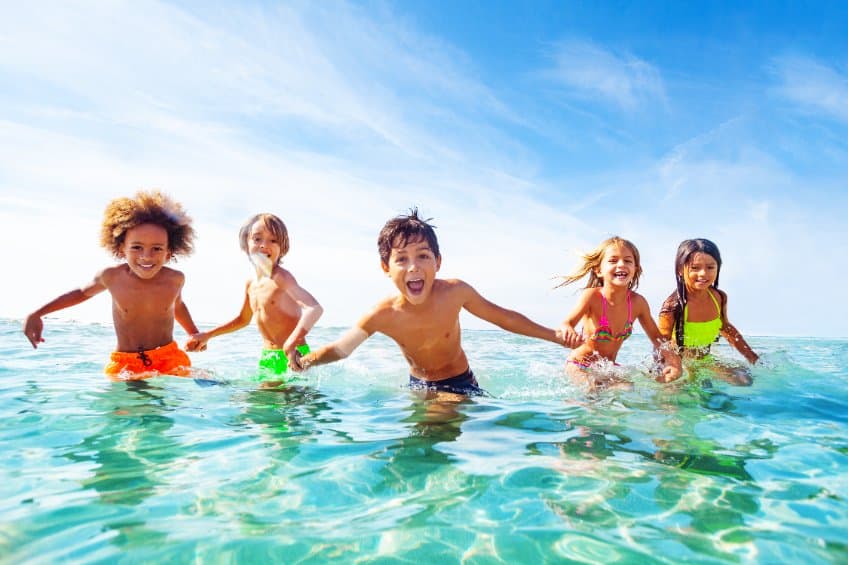The Skinny:
It’s hot and humid, and nothing sounds better than a refreshing dip in a nearby pool, ocean or swimming hole. Great idea, but remember that getting in the water, while rewarding, can be dangerous for adults and children alike. WellWell wants to help eliminate any unfortunate or harmful surprises by laying out some sound pieces of advice to keep everyone afloat. Look before any dips. Read on.
The Slate:
Child Care
Children love water for a lot of great reasons. But this doesn’t mean they can handle the ocean, pool or lake alone. They should never be unattended near water. It is always good to designate a responsible adult as the “Water Watcher” to keep an eye on them. Not only should this adult be on guard, but they should also always have a phone near in emergencies.
Install Pool Fences
Anyone with a pool needs a fence at least four-foot high and surrounds the pool on all four sides. The American Red Cross claims that a four-sided fence reduces a child’s risk of drowning by 83% compared to three-sided guards. The reasons are obvious; a fence prevents young children from accidentally falling into a pool or deciding to get in on their own unsupervised.
Avoid Entrapment
Suction is an overlooked threat when it comes to pools. These cleaning and filtration devices can trap children or weak swimmers underwater. All drains and suction systems should comply with the Pool and Spa Safety Act. In addition, pools should be closed if a drain cap is missing or damaged.
Rip Current
Rip currents, which some people mistakenly call undertows, are dangerous and can occur on any beach with breaking waves, including lakes. These currents can pull a swimmer away from shore or weaken them significantly as they fight against the pull. The best way to overcome the drain of getting caught in these currents is to remain calm, don’t fight them and swim or float parallel to shore until out. It will then be easier to swim back to shore.
Always Wear a Life Vest
Young children or inexperienced swimmers should rely on Coast Guard-certified life jackets when in the water. There are plenty to choose from specifically designed for children and adults of varied sizes. Water wings, floaties, pool noodles and similar products may be fun, but they are no substitutes for actual life jackets.
Wave Awareness
Yes, waves can be fun, but they are usually stronger than the average beachgoer realizes. One study found that strong waves create all sorts of injuries: simple sprains, broken collarbones, and dislocated shoulders to even blunt organ trauma and spinal injuries. Some simple advice: if unsure, check out the strength of area waves with lifeguards, and don’t put you back into big crashers. That can lead to problems.
Swim Sober
It should be obvious. Sadly, for many, it’s not. Yes, a beer at the beach is inviting. Having a six-pack and then going for a swim is dangerous. Drunk or buzzed swimming is a recipe for an injury or worse. Don’t swim intoxicated.
Eyes Up:
What safety measures are we missing? Let us know at info@wellwellusa.com.
WellWell editors independently identify services and products of interest. If readers purchase anything through the associated links, WellWell may earn a commission, which goes to support our work. Learn More.













